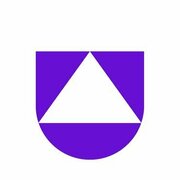Cloud-Native Application Protection Platforms
Best Cloud-Native Application Protection Platforms include:
Microsoft Defender for Cloud, Palo Alto Networks Prisma Cloud, Aqua Cloud Native Security Platform, Lacework, Fidelis Halo, Orca Cloud Security Platform, PingSafe, Sysdig Secure and Tenable Cloud Security.
All Products
(1-21 of 21)
Learn More About Cloud-Native Application Protection Platforms
What are Cloud-Native Application Protection Platforms?
Cloud-Native Application Protection Platforms (CNAPP) are cybersecurity solutions designed to protect cloud-native applications and workloads. These platforms are used by organizations across various departments including IT, security, and application development teams. The primary goal of a CNAPP is to secure cloud-native applications by providing advanced threat detection and prevention capabilities, ensuring compliance with security regulations, and enhancing overall application security.
This software category is closely related to cloud security platforms and application workload protection platforms. Cloud security platforms focus on securing cloud environments and infrastructure, while CNAPPs specifically target the security of cloud-native applications. Application workload protection platforms provide similar capabilities but may not be as tailored for cloud-native application environments.
Cloud-Native Application Protection Platform Features
- Application Threat Detection: CNAPPs employ advanced threat detection techniques to identify and mitigate risks associated with cloud-native applications, such as container vulnerabilities, API attacks, and misconfigurations.
- Vulnerability Management: These platforms offer vulnerability scanning and management functionalities to identify and prioritize vulnerabilities within cloud-native applications. They may also provide recommendations for remediation.
- Runtime Protection: CNAPPs monitor the runtime behavior of cloud-native applications and use machine learning and behavioral analysis techniques to detect and respond to suspicious activities, such as unauthorized access attempts or malicious code execution.
- Compliance and Governance: These platforms help organizations enforce security policies, regulations, and compliance frameworks for cloud-native applications. This includes monitoring and reporting on security configurations, access controls, and data privacy requirements.
- API Security: CNAPPs protect APIs (Application Programming Interfaces) used within cloud-native applications by validating requests, detecting and preventing API abuses, and securing sensitive data transmitted through APIs.
- Identity and Access Management: These platforms provide capabilities for identity and access management, including authentication, authorization, and access control for users and applications accessing cloud-native applications.
- Secure DevOps Integration: CNAPPs offer integration with DevOps toolchains, enabling security to be integrated into the software development lifecycle (SDLC). This includes capabilities such as secure code scanning, vulnerability assessment during build processes, and security testing automation.
- Threat Intelligence Integration: Many CNAPPs integrate with threat intelligence feeds and databases to enhance threat detection and response capabilities by leveraging up-to-date information about the latest threats and attack techniques.
Cloud-Native Application Protection Platform Comparison
When looking to purchase a Cloud-Native Application Protection Platform users should consider:
Platform Flexibility: The flexibility of a CNAPP and its compatibility with different cloud platforms, container orchestration systems, and programming languages can vary depending on use case.
Scalability and Performance: Another important consideration when purchasing a CNAPP should be its ability to handle the volume of cloud-native applications and workloads in your environment without impacting application performance.
Vendor Support and Updates: As with most software solutions, how often the software is updated and maintained is also important. It is essential to ensure the platform remains up-to-date with the latest threats and vulnerabilities. A good candidate for a CNAPP should be able to provide a clear track record of updates, patches, and support for the CNAPP.
Pricing Information
Pricing for CNAPPs can vary depending on factors such as the size of the organization, the number of cloud-native applications, and the level of functionality required. Vendors in this space usually provide custom quotes tailored to the specific needs of the buyer. Pricing models may include subscription-based licensing, which is typically billed annually or monthly.
Some vendors offer free trials or limited-feature versions of their CNAPPs, allowing potential buyers to evaluate the platform before committing to a purchase. Higher-priced plans often include additional features and capabilities, such as advanced threat intelligence integration, dedicated support, or advanced reporting and analytics functionalities.
Due to the nature of the pricing models in this market, it is recommended that potential buyers directly contact the vendors for detailed pricing information and to discuss their specific requirements.
Related Categories
Frequently Asked Questions
What do Cloud-Native Application Protection Platforms do?
Cloud-Native Application Protection Platforms (CNAPP) are cybersecurity solutions that specifically focus on securing cloud-native applications. These platforms provide advanced threat detection, vulnerability management, compliance enforcement, and API security features to protect cloud-native applications from potential risks and attacks.
What are the benefits of using Cloud-Native Application Protection Platforms?
The benefits of using Cloud-Native Application Protection Platforms include increased security for cloud-native applications, reduced risk of breaches and vulnerabilities, improved compliance with security regulations, enhanced visibility into application behavior, and streamlined integration with the DevOps process. These platforms help save time and resources by automating security processes and providing centralized control over application security.





















